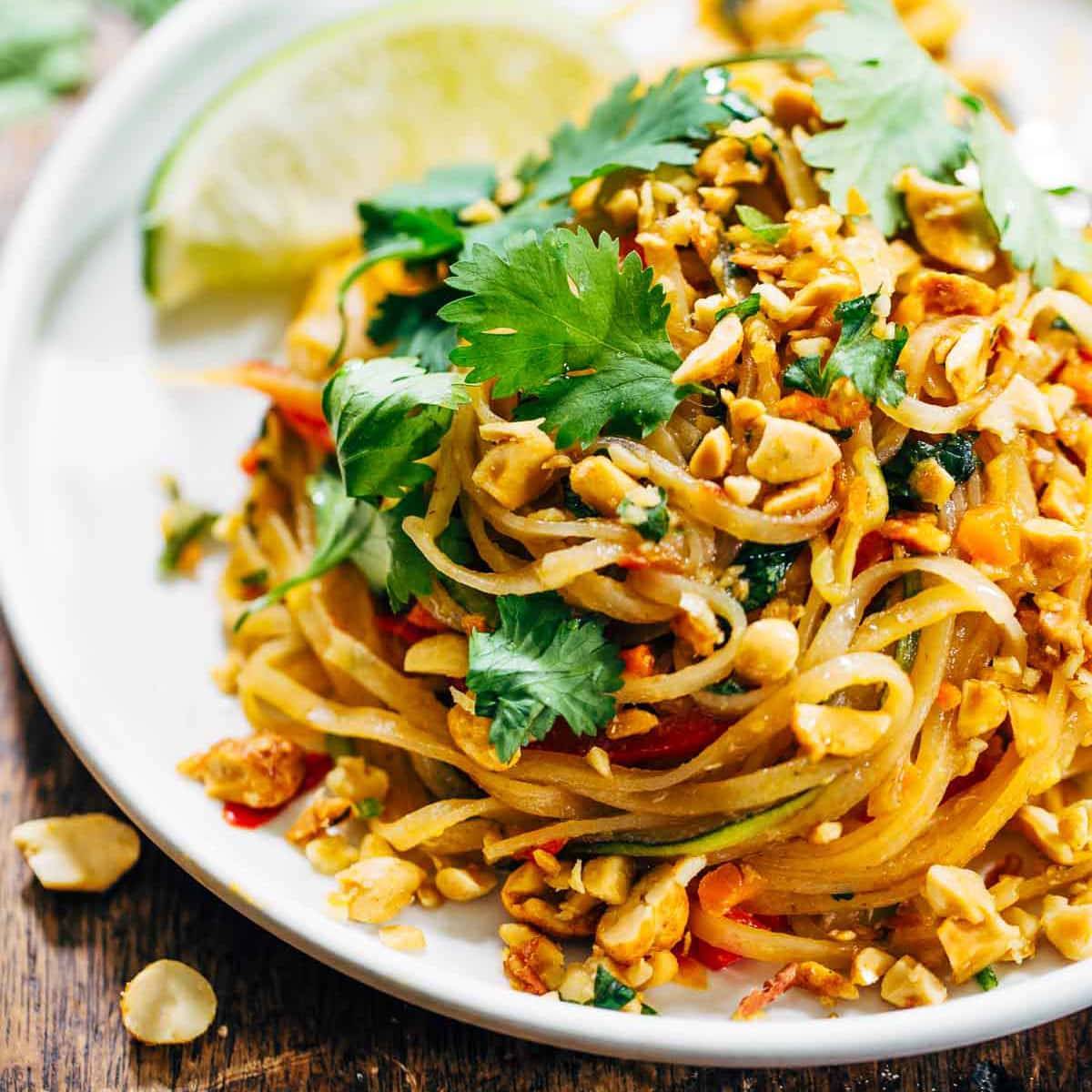
Unveiling the Allure of Pad Thai
When it comes to iconic dishes in Thai cuisine, few can match the popularity and unmistakable flavors of Pad Thai. This exquisite dish, with its delicate balance of sweet, sour, salty, and umami notes, has won the hearts and taste buds of people around the world. In this article, we’ll delve into the origins of Pad Thai, its key ingredients, and provide you with an authentic recipe that will allow you to recreate this masterpiece in your own kitchen.
Unearthing the Origins
Pad Thai, also known as Phad Thai, is a stir-fried noodle dish that has its roots deeply embedded in Thailand’s culinary history. While its exact origins are shrouded in mystery, it is believed that Pad Thai was popularized during World War II as a response to rice shortages. The Thai government, under the leadership of Prime Minister Plaek Phibunsongkhram, aimed to promote a sense of national identity and unity. As a result, a campaign was launched to encourage the consumption of noodles, which led to the rise of Pad Thai as a cherished national dish.
The Symphony of Flavors
At the heart of Pad Thai’s allure lies its harmonious blend of flavors. The dish features thin rice noodles, which provide a light and delicate base. The medley of ingredients includes fresh shrimp, chicken, or tofu, adding layers of protein richness. A symphony of flavors is created through the addition of tamarind paste, which lends a delightful tanginess, balanced by palm sugar’s subtle sweetness. The umami depth is enhanced with fish sauce, while dried chili flakes or fresh bird’s eye chilies infuse the dish with a hint of heat.
Key Ingredients that Elevate
Let’s explore the key components that contribute to the unmistakable taste of Pad Thai:
- Rice Noodles: These thin, flat noodles are the foundation of Pad Thai. They absorb the flavors of the dish while maintaining their tender texture.
- Protein: Whether you opt for succulent shrimp, tender chicken, or protein-rich tofu, the protein element adds a substantial dimension to the dish.
- Tamarind Paste: The essence of Pad Thai’s tangy allure. Tamarind paste not only provides a unique tartness but also imparts a beautiful caramelized color to the noodles.
- Fish Sauce: A quintessential ingredient in Thai cuisine, fish sauce introduces the umami factor that elevates the entire flavor profile.
- Palm Sugar: Derived from the sap of palm trees, palm sugar bestows a delicate sweetness that perfectly balances the dish’s overall taste.
- Crunchy Peanuts: Crushed or chopped peanuts not only offer a satisfying crunch but also a nutty undertone that complements the other flavors.
- Fresh Herbs: The addition of cilantro and chives imparts a refreshing herbal aroma that contrasts wonderfully with the savory and tangy components.
Crafting Your Own Pad Thai Masterpiece
Now that we’ve tantalized your taste buds with the essence of Pad Thai, let’s dive into creating this delectable dish in your own kitchen.
Ingredients You’ll Need:
- 8 oz (about 230g) of rice noodles
- 8-10 large shrimp, peeled and deveined (you can also use chicken or tofu)
- 2 eggs, lightly beaten
- 2 cloves of garlic, minced
- 1/4 cup of vegetable oil
- 1/4 cup of fresh bean sprouts
- 1/4 cup of crushed peanuts
- 2 tablespoons of fish sauce
- 2 tablespoons of tamarind paste
- 1 tablespoon of palm sugar
- 1/2 teaspoon of dried chili flakes (adjust to taste)
- 2-3 sprigs of fresh cilantro, chopped
- 2-3 sprigs of fresh chives, chopped
- Lime wedges for garnish
Instructions:
- Prepare the Noodles: Soak the rice noodles in warm water for about 15-20 minutes until they are pliable. Drain and set aside.
- Sauce Preparation: In a bowl, mix the fish sauce, tamarind paste, palm sugar, and dried chili flakes until well combined. Taste and adjust the balance of flavors to your preference.
- Stir-Fry Magic: Heat the vegetable oil in a wok or large skillet over medium-high heat. Add the minced garlic and stir-fry until fragrant. Push the garlic to the side and pour in the beaten eggs. Scramble the eggs until they’re just set, then mix them with the garlic.
- Protein Power: Push the egg and garlic mixture to the side and add the shrimp (or your chosen protein) to the wok. Stir-fry until the shrimp turn pink and are cooked through. Remove them from the wok and set aside.
- Noodle Nirvana: Add the soaked rice noodles to the wok, followed by the prepared sauce. Use tongs to gently toss and coat the noodles evenly with the sauce.
- The Finale: Add the cooked protein back to the wok along with the bean sprouts. Continue stir-frying for another 2-3 minutes until everything is well combined and heated through.
- Garnish and Serve: Transfer the Pad Thai to serving plates. Top with crushed peanuts, chopped cilantro, and chives. Serve with lime wedges on the side for an extra burst of tanginess.
Savoring the Masterpiece
In conclusion, Pad Thai is not just a dish; it’s an embodiment of Thailand’s culinary history and creativity. With its harmonious blend of flavors and textures, Pad Thai captures the essence of Thai cuisine in every mouthful. By following our authentic recipe, you can embark on a culinary journey right in your own kitchen, creating a Pad Thai masterpiece that’s sure to impress your taste buds and those of your loved ones. So, roll up your sleeves, gather the ingredients, and let the wok stir the magic of Pad Thai into your life.
